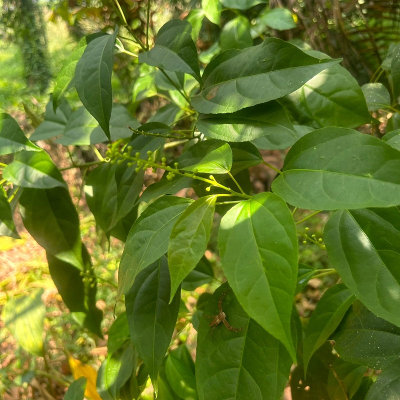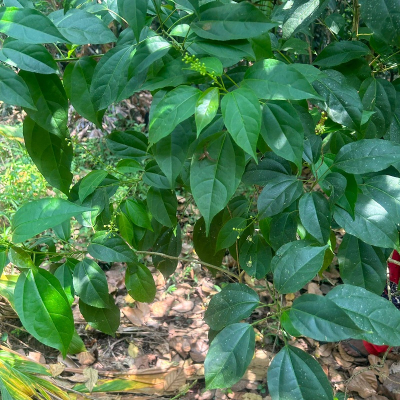Distribution and Habitat: It is distributed throughout North India. It is cultivated in Assam, West Bengal and also in South India.
Botany: Croton oil plant is a small evergreen tree with separate male and female flowers. It grows to 4.5- 6.0 m in height and it has ash coloured smooth bark and young shoots sprinkled with stellate hairs.
- Leaves: Oblong to ovate-lanceolate, obtuse or rounded at the 2-glanded base, acuminate, membranous, yellowish green and minutely toothed.
- Flowers: Small, unisexual, males on slender pedicels, females larger and on short thick pedicels.
- Fruits: Ovoid or oblong trigonous capsules.
- Seeds: Smooth, testa black and enclosing reddish brown oily endosperm.
Properties: Digestive, carminative, anti-inflammatory, Purging croton or is one among the seven poisons described in Ayurveda. The drug is well known for its drastic purgative property.
Chemical constituents: Oil contains phorbol myristate acetate . Seeds contain upto 20% protein and 30-50% lipids. Iso-guanine-D-ribose (crotoniside) and saccharose were isolated from the seeds.
Uses: The drug is found to be useful in ascites, anasarca, cold, cough, asthma, constipation, calculus, dropsy, fever and enlargement of the abdominal viscera. The seed paste is a good application for skin diseases, painful swellings and alopacia. The seed-oil is useful in chronic bronchitis, laryngeal affections, and arthritis and lock jaw. Misraka-sneham is an important preparation using the drug
Formulations: Misraka sneham
Agro technology:
Propagation: The plant is propagated by seeds. Seeds are to be sown on seedbeds and about 2 months old seedlings are used for transplanting. Pits of size 50 cm3 are to be taken at 3 m spacing and filled with dried cow dung, sand and topsoil and formed into a mound. The seedlings are to be planted on these mounds.
Irrigations: Irrigation during summer months is beneficial. Application of organic manure after every 6 months is desirable. Weeding is to be carried out one month after transplanting.
Pests and Diseases: The plant is not attacked by any serious pests or diseases.
Harvesting: Fruits are formed at the end of first year. Fruits when ripen and start to crack are to be collected, dried in sun, then the outer shell is removed and again dried for one day before marketing.



